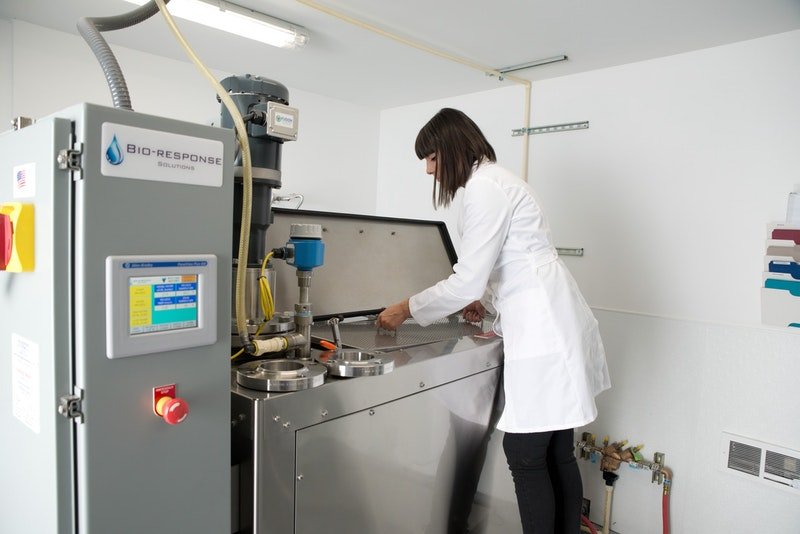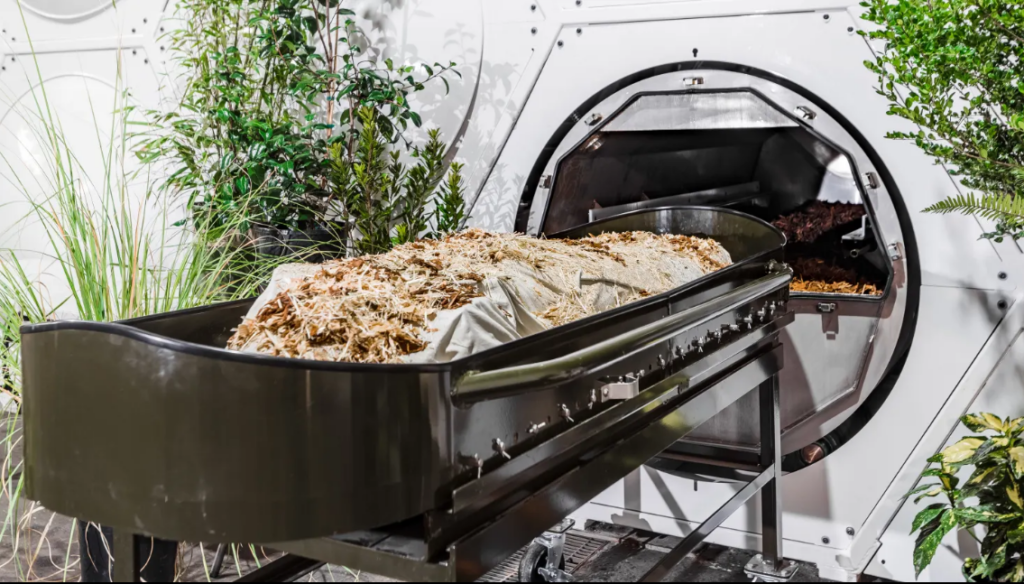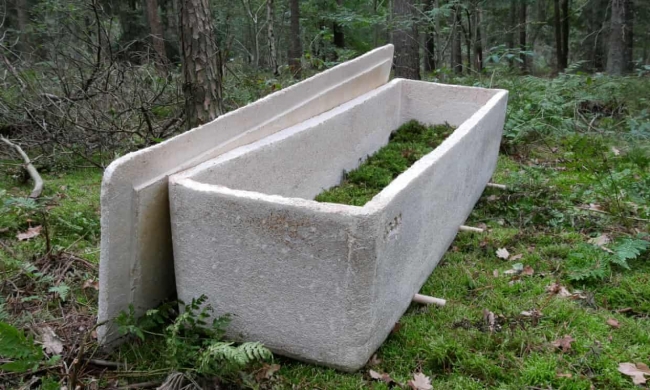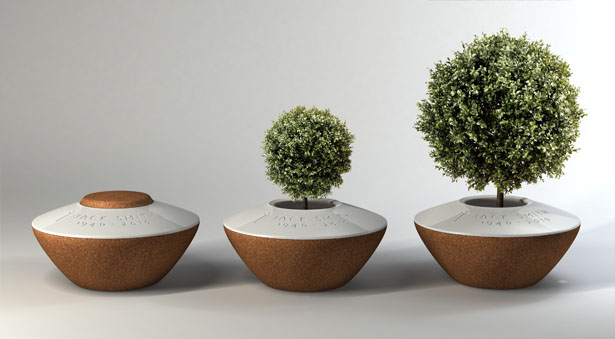New Death Technology
Death tech is any new technology that is used to dispose of a dead body. Older forms of death technology might be burial or cremation. Death technology of the future includes methods like aquamation and natural organic reduction.
Alkaline Hydrolysis
Aquamation—sometimes called alkaline hydrolysis —is a gentle, environmentally friendly alternative to fire cremation.
It is a quiet, water-based process that reduces the remains to dust/ash, and is returned to the family. The Aquamation process takes place in a pressurized chamber over about 8 hours. During the process, the remains are placed in an airtight capsule with alkalized water and through gentle water flow, all organic material is broken down. When the process is completed, the bone remains are collected, go through a drying process and then processed and returned to family.

Natural Organic Reduction (Human Composting)
Natural Organic Reduction (NOR) also known as human composting, uses the principles of nature, combining microbes, oxygen and plant matter to gently transform human remains into soil, so that our bodies can grow new life after we die.
Just as with cremation or casketed burial, in states where NOR is legal an individual or their family would have the option of composting. Composting facilities are licensed, highly regulated, and run by professionals just like a crematorium or funeral home.
The process of NOR can strengthen the environment by utilizing climate healing practices and moving away from toxic ones, and prioritizing soil health.

Mushroom Coffins
Calling it the “world’s first living coffin,” as it is composed of mycelium and wood chips, with a “bed” of moss, plants, and various living microorganisms.
In the U.S., designer Shaina Garfield also created a coffin called “Leaves”, which incorporates mushrooms. The body is wrapped in a cotton shroud, and secured to a wooden plank with woven fibers that contain fungal spores.

Biodegradable Tree Urns
One of the most popular corpse-to-tree products is the Bios Urn, or similar urns, that promise to transform a person’s ashes into a tree, plant, flower, etc.
But, can plants grow in ashes? No.
While it can be a lovely idea to scatter your loved one’s ashes at the base of a tree or in the garden, this is more of a symbolic gesture, since cremated remains are inorganic and contain no trace of human DNA. You aren’t really “becoming a tree” post-cremation.

